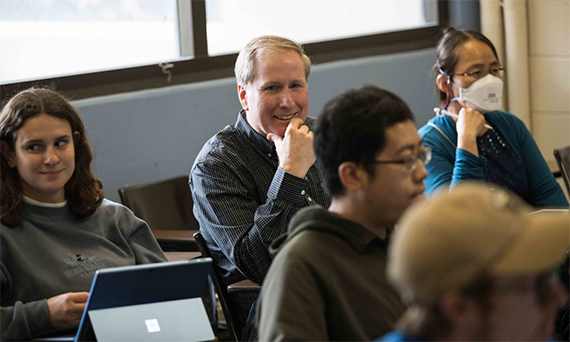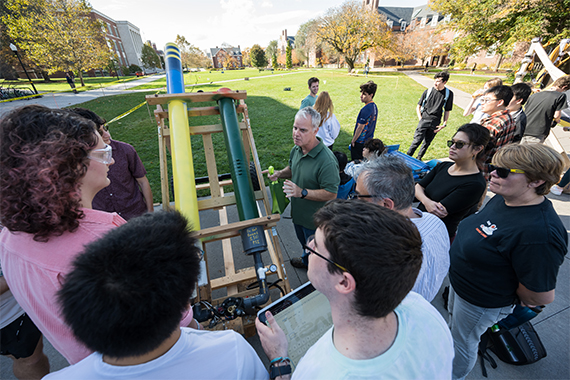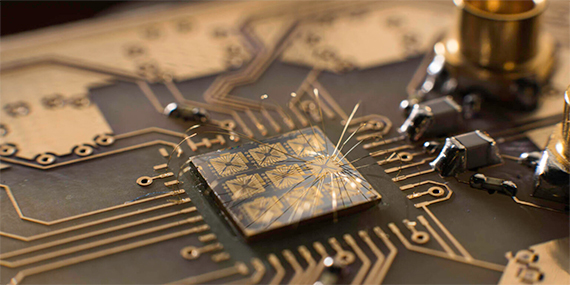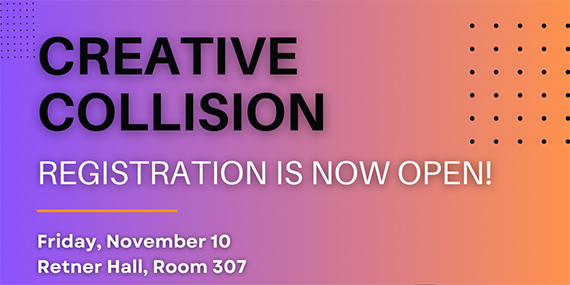October 30, 2023

James McGrath, the William R. Kenan Jr. Professor of Biomedical Engineering, is among the recipients of the 2023 Goergen Awards for Excellence in Undergraduate Teaching. (University of Rochester photo / J. Adam Fenster)
A beloved faculty member from the Department of Biomedical Engineering will be formally presented with the Goergen Award for Excellence in Undergraduate Teaching at a ceremony taking place at the Feldman Ballroom at 4 p.m. today. James McGrath, the William R. Kenan Jr. Professor of Biomedical Engineering, is one of three Goergen Award winners this year.
Established in 1997 by University Trustee and Board Chair Emeritus Robert Goergen ’60 and his wife, Pamela, the award recognizes distinction in undergraduate teaching among faculty in Arts, Sciences & Engineering. Nominations come from students, faculty, staff, and administrators.
Jim’s love of teaching is clear and virtually every biomedical engineering student over the past two decades has benefitted from his instruction through the required BME 201: Fundamentals of Biomechanics class he teaches. One of his students called him an “inspirational professor, mentor, and a role model.”
Three main rules govern Jim’s classes: neatness counts; working carefully is more important than working quickly; and teach to the least-prepared student in the room. He’s helped provide so many engineers a strong foundation to their education and we are truly grateful to have him amongst our faculty.
Read more about what makes Jim such a wonderful teacher at the News Center.
HUMAN BRAIN’S ‘TEMPORAL SCAFFOLDING’ INSPIRES NEW AI APPROACHES

Associate Professor Christopher Kanan will develop deep-learning models and algorithms based on temporal scaffolding, a hypothesis about how the human brain uses sleep and awake periods to learn over time. (Getty Images illustration)
A Hajim computer scientist is part of a transdisciplinary team using a recent hypothesis about how the human brain uses sleep and awake periods to learn over time to try to overcome artificial intelligence’s limitations with lifelong learning. Associate Professor Christopher Kanan and his collaborators received $2 million in funding from the National Science Foundation (NSF) to use the “temporal scaffolding” hypothesis to produce AI that rapidly learns, adapts, and operates in uncertain conditions.
Current forms of AI struggle with learning new tasks continuously throughout life and perform poorly in resource-constrained environments. Chris notes that while conventional methods of reinforcement learning led to AI models that can beat professional players at games such as Dota 2, the AI models needed enormous amounts of experience to acquire those skills.
“This indicates something is fundamentally wrong with how reinforcement learning works,” he says. “Instead, we are proposing to use an alternative paradigm to hopefully get much more efficient learning.”
Read more about this exciting new project on the News Center.
PUMPKINS TAKE FLIGHT

Students from Rochester, RIT, and MCC launched pumpkins across Wilson Quad in a competition hosted by our ASME chapter. (University of Rochester photo / J. Adam Fenster)
We were fortunate to have beautiful weather for one of the Hajim School’s quirkiest fall traditions. On Friday, our chapter of the American Society of Mechanical Engineers (ASME) held their annual pumpkin launch. Students from Rochester, RIT, and MCC competed to see who was the best at hurling pumpkins across Wilson Quad with their catapults, trebuchets, and pressurized cannon launchers. Thank you to all the students who applied their engineering skills in this fun-filled event.
BUFFALO-ROCHESTER-SYRACUSE REGION DESIGNATED PRESTIGIOUS FEDERAL TECH HUB

A quantum processor semiconductor chip connected to a circuit board in a lab at the University of Rochester, a lead partner for the region’s NY SMART I-Corridor Tech Hub. (University of Rochester photo / J. Adam Fenster)
Last week, the Buffalo-Rochester-Syracuse region won the prestigious federal Tech Hub designation created in the CHIPS and Science Act, putting Upstate New York further on the road to becoming America’s semiconductor superhighway.
US Senate Majority Leader Charles E. Schumer said that the three-region consortium—of which the University of Rochester is an educational and lead partner—is one of only 31 regions selected for the Tech Hub designation. The region’s NY SMART I-Corridor Tech Hub proposal will now be able to compete for the next phase of the Tech Hubs Program that will invest between $50 and $75 million in each of five to 10 designated hubs.
Read more about the consortium at the News Center.
DANDYHACKS ’23

More than 200 Rochester students are expected to compete this weekend in DandyHacks, the University’s annual 42-hour long hackathon. This student-led event provides a unique opportunity for students to work on real-world projects directly related to their field of study. By collaborating with peers from other majors, students will have the chance to hone their creativity, teamwork, and technical skills and bring their ideas from the classroom to life.
For more information, including how to register, go to the DandyHacks website.
CREATIVE COLLISION CHALLENGE

Registration is now open for the Ain Center for Entrepreneurship and Innovation’s Creative Collision Challenge. This one-day competition brings together students from diverse backgrounds and programs to brainstorm solutions to social and cultural issues. Students receive team assignments and a problem statement the night before the Challenge, and on the day of, teams are guided by mentors and experts to devise an action plan, which is then presented to a panel of judges.
The top teams earn cash prizes. The Challenge is open to all Rochester students from any school, program, and class year. It will be held on Friday, November 10 from 10 a.m. to 4 p.m. in Rettner Hall, Room 307. Lunch will be provided. Register online by November 2. For questions about this year’s Challenge, email Heidi Mergenthaler, the Ain Center for Entrepreneurship and Innovation’s senior program manager.
NEWLY FUNDED RESEARCH

From left to right: Laurel Carney, Marc Porosoff, Andrea Pickel, Jaime Cardenas, and Chunlei Guo secured new sponsored research grants last week.
Beginning with this edition of Hajim Highlights, I plan to include a recurring roundup of new sponsored research grants secured by Hajim faculty members. Our faculty are engaging in so many exciting research endeavors supported by government agencies, nonprofits, and industry partners, and I want to try to highlight as many as possible moving forward.
Last week, Hajim faculty secured four new sponsored research projects totaling more than $266,000:
- Laurel Carney, the Marylou Ingram Professor in Biomedical Engineering, secured $52,900 in funding from the Innovation Fund Denmark for a project titled, “Data-driven personalization of speech perception models for advanced hearing-aid development.”
- Assistant Professor Marc Porosoff from the Department of Chemical Engineering and Assistant Professor Andrea Pickel from the Department of Mechanical Engineering received $108,367 as co-PIs on a project led by Columbia University and sponsored by the New York State Energy Research and Development Authority titled, “Carbontech Development Initiative: Development of Efficient Dual Functional Materials for CO2 Capture and Conversion.”
- Associate Professor Jaime Cardenas from the Institute of Optics received $55,000 in funding from Photonect Interconnect Solutions Inc. under a NASA Small Business Technology Transfer (STTR) Phase 1 award for a project titled, “Measurement of optical mode profile at extreme temperatures for a photonic chip.”
- Professor Chunlei Guo from the Institute of Optics secured $50,000 in funding from New York State’s FuzeHub for a project titled, “Scalable Laser Nanopatterning for High-Efficiency Solar Absorbers in Photovoltaic and Photothermal Applications.”
Please join me in congratulating these faculty members for securing funding for these new initiatives.
Have a great week!
Your dean,
Wendi Heinzelman